Discover the Spiritual Beauty of Mount Jiuhua: Your Ultimate Guide to Buddhist Temples
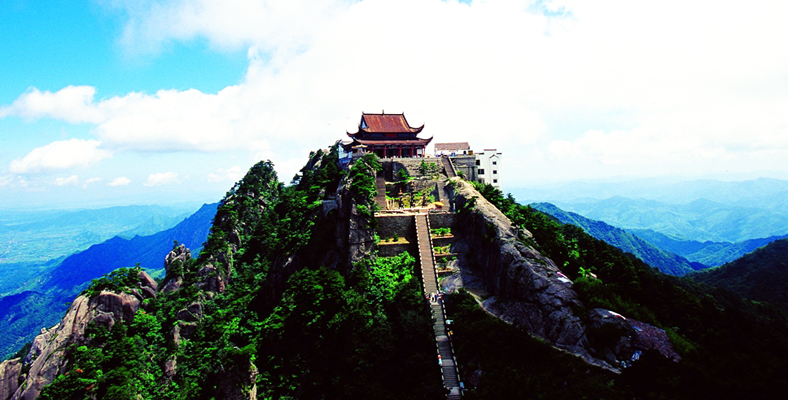
An Essential Guide to Visiting Mount Jiuhua Buddhist Temples
Nestled in the picturesque landscape of Anhui Province, Mount Jiuhua, known as Jiuhuashan, stands as a beacon for both spiritual seekers and nature lovers alike. Revered as one of China’s Four Sacred Buddhist Mountains, this holy site is dedicated to Ksitigarbha Bodhisattva, the compassionate protector of souls in the afterlife. With its breathtaking vistas, serene temples, and rich cultural heritage, Mount Jiuhua offers a unique blend of spirituality and natural beauty that captivates visitors from around the globe.
As you ascend through its lush, verdant trails, you’ll encounter a tapestry of majestic peaks, tranquil streams, and ancient monasteries that tell stories of the countless pilgrims and poets who have tread these paths for over 1,600 years. The mountain’s enchanting scenery—characterized by its 99 towering peaks and stunning waterfalls—serves as the perfect backdrop for introspection and enlightenment. Each temple you visit is steeped in history, inviting you to explore the profound teachings of Buddhism while absorbing the peaceful ambiance that permeates the air.
Whether you’re an avid hiker eager to immerse yourself in nature or a traveler seeking spiritual solace, Mount Jiuhua promises an unforgettable experience. Prepare to be enchanted by the harmonious blend of vibrant culture, breathtaking landscapes, and the serene presence of Ksitigarbha as you embark on your journey through this sacred mountain.
In This Guide
- An Essential Guide to Visiting Mount Jiuhua Buddhist Temples
- The Rich History and Legends of Mount Jiuhua Buddhist Temples
- Main Highlights: What You Absolutely Can’t Miss
- Planning Your Visit: A Practical Guide
- Tickets: Prices, Booking, and Tips
- How to Get There: A Complete Transportation Guide
- Local Cuisine and Accommodation Nearby
- Frequently Asked Questions
- Final Thoughts on Your Trip
The Rich History and Legends of Mount Jiuhua Buddhist Temples
Nestled in the picturesque landscape of Anhui Province, Mount Jiuhua is steeped in rich history and adorned with legends that resonate deeply within Chinese Buddhism. Revered as one of the Four Sacred Buddhist Mountains of China, it serves as a spiritual haven dedicated to Ksitigarbha Bodhisattva, the compassionate protector of souls in the afterlife.
The mountain’s historical significance dates back over 1,600 years, beginning with the arrival of an Indian monk named Beidu during the Eastern Jin Dynasty in 401 AD. His mission was to establish temples and propagate Buddhist teachings, marking the inception of a profound religious legacy that has flourished ever since. As the centuries rolled on, the mountain attracted countless pilgrims, scholars, and poets who sought enlightenment amidst its serene beauty.
Among the many who were drawn to Mount Jiuhua was the illustrious Tang Dynasty poet Li Bai. His visits inspired the transformation of the mountain’s name from Jiuzi to Jiuhua, a change reflecting the lotus-like formation of its 99 peaks. Li Bai immortalized his reverence in poetry, famously noting, “Magic is divided into two branches, sacred mountain generates nine glories,” encapsulating the mystical allure of this sacred site.
Another pivotal figure in Mount Jiuhua’s history is Kim Qiaoque, a prince from the ancient kingdom of Silla, modern-day South Korea. Arriving in 719 AD, he devoted 75 years to spiritual cultivation on these sacred grounds. Upon his passing at the age of 99, his remarkably preserved body led locals to believe that he was the reincarnation of Ksitigarbha Bodhisattva. This belief further solidified Mount Jiuhua’s status as an essential pilgrimage site for devotees of Buddhism.
The architectural marvels of Mount Jiuhua are a testament to its veneration over the centuries. Numerous temples and monasteries dot the landscape, meticulously constructed to honor Ksitigarbha Bodhisattva and to provide a serene space for meditation and reflection. Among these, the Huacheng Temple and the Kaihua Temple stand out, showcasing intricate carvings and stunning murals that narrate the teachings of Buddhism.
Visitors to Mount Jiuhua can immerse themselves not only in its breathtaking natural scenery—characterized by soaring peaks, cascading waterfalls, and tranquil streams—but also in the rich tapestry of legends woven throughout its history. As you explore the temples and navigate the scenic trails, you’ll encounter stories of devotion, enlightenment, and the enduring power of faith that continue to inspire pilgrims and travelers alike.
Thus, Mount Jiuhua remains a vibrant symbol of spiritual heritage, inviting all who visit to partake in its timeless tranquility and profound cultural significance. Whether you are a devout follower or a curious traveler, the mountain and its temples offer a unique glimpse into the essence of Chinese Buddhism and its enduring legacies.
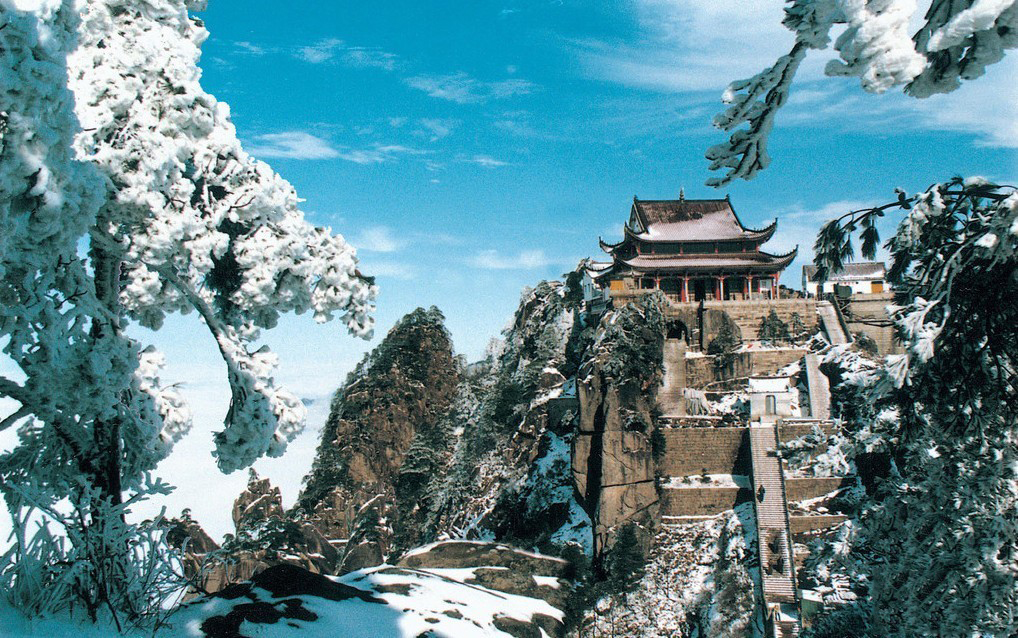
Mount Jiuhua Buddhist Temples.
Main Highlights: What You Absolutely Can’t Miss
When visiting Mount Jiuhua, a sacred Buddhist mountain nestled in Anhui Province, you’ll discover an enthralling blend of nature, culture, and spirituality. Here are the main highlights that you absolutely can’t miss during your exploration of this remarkable destination.
1. The 99-Meter Statue of Ksitigarbha Bodhisattva
One of the most iconic landmarks at Mount Jiuhua is the stunning 99-meter statue of Ksitigarbha Bodhisattva. Towering majestically, this statue represents the protector of souls in the afterlife and is a focal point for pilgrims and visitors alike. The surrounding area offers a serene atmosphere, perfect for reflection and contemplation.
2. Jiuhua Street Scenic Area
Begin your journey at Jiuhua Street, a vibrant area brimming with shops, tea houses, and restaurants. This bustling street serves as the gateway to the mountain’s spiritual sites. Here, you can sample local snacks, purchase unique souvenirs, and soak in the lively ambiance before venturing further into the mountain’s depths.
3. Heavenly Scenic Area
Venture into the Heavenly Scenic Area, where breathtaking views and tranquil landscapes await. This area is known for its picturesque walking trails that wind through lush forests and offer stunning vistas of the surrounding peaks. Don’t forget your camera—the natural beauty here is nothing short of spectacular.
4. Flower Scenic Area
The Flower Scenic Area showcases the vibrant flora that flourishes on Mount Jiuhua. In spring and summer, the mountainsides burst into color with various flowers, creating a picturesque backdrop against the serene Buddhist temples. This area is perfect for leisurely strolls and photography, allowing you to immerse yourself in nature’s beauty.
5. Minyuan Scenic Area
Minyuan Scenic Area is a must-visit for those seeking a more remote experience. Explore the lesser-known trails that lead to hidden temples and ancient relics, allowing you to connect deeply with the mountain’s spiritual roots. This area promises a quieter, contemplative experience amidst the stunning landscapes.
6. Great Vow Culture Park
Delve into the rich Buddhist culture at Great Vow Culture Park. This expansive park is dedicated to the teachings of Ksitigarbha Bodhisattva and features various temples, pagodas, and sculptures. It’s an excellent place to learn about the history of Buddhism in the region and its significance to the local community.
7. Ten Scenes of Mount Jiuhua
As you explore, be sure not to miss the “Ten Scenes of Mount Jiuhua,” a collection of breathtaking viewpoints and natural wonders that highlight the beauty of the mountain. Each scene offers a unique perspective, whether it’s the sight of waterfalls cascading down rocky cliffs or the panoramic views from the peaks.
8. Hiking the Main Peaks
Mount Jiuhua is renowned for its 99 peaks, each offering its own hiking trails and scenic rewards. Notable peaks include Tiantai Peak and Lianhua Peak, where you can enjoy sweeping views of the surrounding landscape and the chance to meditate in the quietude of nature.
9. Cultural Heritage Sites
Take time to explore the historical and cultural heritage sites scattered throughout the mountain. From ancient temples to inscriptions left by famous poets like Li Bai, each site tells a story that deepens your understanding of the rich tapestry of Chinese Buddhist history.
10. Sunrise and Sunset Views
Finally, don’t miss the chance to witness the magic of sunrise or sunset over Mount Jiuhua. The changing colors of the sky against the backdrop of the mountains create a breathtaking spectacle, offering a perfect end to your day of exploration.
With its stunning natural beauty and profound spiritual significance, Mount Jiuhua offers an unforgettable experience for travelers seeking both adventure and tranquility. Be prepared for a journey that will touch your heart and enrich your understanding of Buddhism in China.
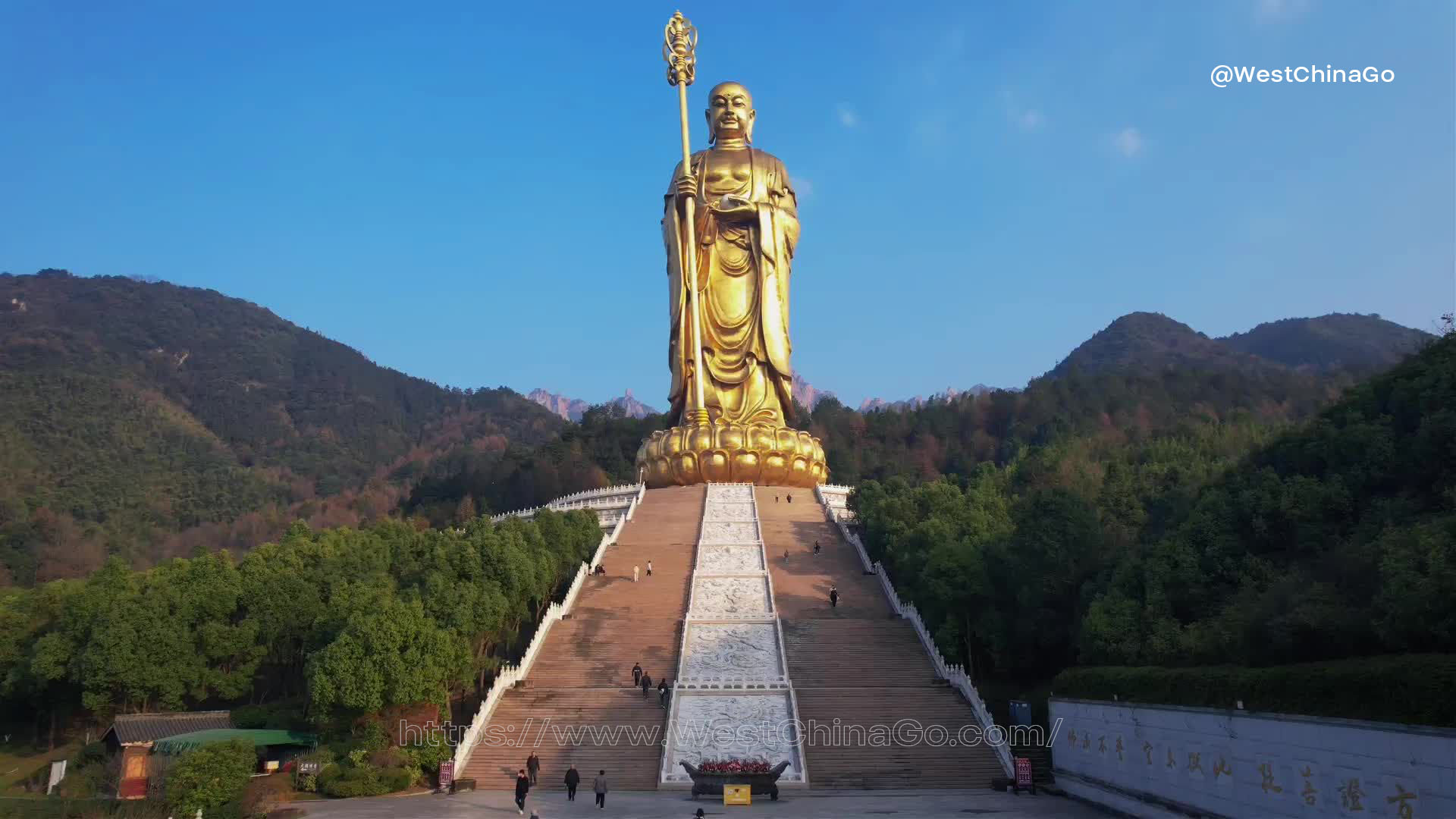
Mount Jiuhua Buddhist Temples.
Planning Your Visit: A Practical Guide
Your Essential Guide to Visiting Mount Jiuhua Buddhist Temples
Mount Jiuhua, one of China’s Four Sacred Buddhist Mountains, is not only a spiritual haven but also a breathtaking natural landscape. Whether you’re a devoted Buddhist or a curious traveler, visiting this holy site offers a unique chance to immerse yourself in rich cultural heritage and stunning scenery. This guide will help you plan your visit to Mount Jiuhua, ensuring you make the most of your experience.
Best Time to Visit
The ideal times to explore Mount Jiuhua are from March to November. During these months, the weather is generally mild, making hiking and outdoor activities more enjoyable. Keep in mind that weekends and holidays can attract larger crowds, so try visiting on weekdays if possible.
Getting There
Mount Jiuhua is located in Qingyang County, Chizhou City, Anhui Province, approximately 20 kilometers from downtown Chizhou.
- By Train: The nearest railway station is in Chizhou, which connects you to major cities in China. From Chizhou, you can take a local bus or taxi to the mountain.
- By Bus: Regular bus services run from nearby cities such as Huangshan and Anqing directly to Mount Jiuhua.
- By Car: If you prefer driving, rental services are available in major cities. Follow local signage to the mountain.
Entrance Fees and Tickets
- Admission Fee:
- 190 Yuan per person (January 16 to November 14)
- 110 Yuan per person (November 15 to January 15 of the following year)
- Additional Costs: Note that fees for the cable car and sightseeing bus are not included in the admission price.
Recommended Duration
Plan for one to two days at Mount Jiuhua to fully appreciate the temples, hiking trails, and natural scenery. This allows you to explore various scenic areas at a leisurely pace.
Key Attractions
- Jiuhua Street Scenic Area: The bustling heart of the mountain, where you can find shops, eateries, and historical sites.
- Heavenly Scenic Area: Known for its stunning views and serene atmosphere, perfect for reflection and meditation.
- Flower Scenic Area: A picturesque spot featuring beautiful flora, ideal for photography enthusiasts.
- Minyuan Scenic Area: Offers unique rock formations and secluded paths for exploration.
- Great Vow Culture Park: A cultural hub where you can learn about the significance of Ksitigarbha Bodhisattva.
Hiking Tips
- Dress Appropriately: Wear comfortable hiking shoes and dress in layers, as temperatures can vary throughout the day.
- Stay Hydrated: Bring plenty of water, especially if you plan on hiking the more challenging trails.
- Trail Maps: Obtain a map from the visitor center to help navigate the various paths and scenic viewpoints.
Local Cuisine
Don’t miss the chance to sample local Anhui cuisine. Try dishes like stewed bamboo shoots, braised rabbit, and various vegetarian options available at local eateries. Many restaurants also offer traditional Buddhist meals, providing a unique tasting experience.
Cultural Etiquette
- Respect Religious Practices: When visiting temples, maintain a respectful demeanor. Dress modestly and refrain from loud conversations.
- Photography: Always ask for permission before photographing monks or worshippers, and be mindful of where you take photos in sacred areas.
Accommodation
For those wishing to stay overnight, there are several hotels and guesthouses near the mountain. Options range from budget-friendly hostels to more luxurious accommodations, providing a variety of choices based on your travel style.
Practical Information
- Opening Hours: The mountain is open daily from 08:00 to 17:30.
- Emergency Contacts: Familiarize yourself with local emergency numbers and the location of nearby medical facilities.
By following this guide, your visit to Mount Jiuhua will be rewarding and enriching. Whether you seek spiritual enlightenment, adventure, or simply a beautiful escape from the hustle and bustle of everyday life, Mount Jiuhua has something for everyone. Enjoy your journey to this magnificent mountain!

Mount Jiuhua Buddhist Temples.
Tickets: Prices, Booking, and Tips
Visiting Mount Jiuhua, one of the Four Sacred Buddhist Mountains in China, offers an enriching experience of spirituality and breathtaking natural beauty. Here’s everything you need to know about ticket prices, booking options, and some handy tips for your journey.
Ticket Prices
- General Admission:
- 190 Yuan per person (from January 16 to November 14)
-
110 Yuan per person (from November 15 to January 15 of the following year)
-
Additional Costs: Please note that the ticket price does not include fees for the cableway or the sightseeing bus, which can enhance your experience by providing easier access to various scenic areas.
Booking Options
Booking your tickets to Mount Jiuhua can be done in a few ways:
-
Online Reservations: Many travel agencies and platforms offer the option to book tickets in advance. This can save you time and ensure your entry on busy days.
-
On-Site Purchase: If you prefer spontaneity, tickets can be purchased at the entrance. However, it’s advisable to arrive early, especially during peak tourist seasons, to avoid long queues.
-
Tailor-Made Tours: Consider booking a guided tour that includes transportation, accommodation, and all entrance fees. This option may also offer insights into the rich history and culture of the area.
For personalized assistance or package deals, you can contact local tour operators. Some options include quick responses via phone or email, ensuring you can get your queries answered promptly.
Tips for Visitors
-
Best Time to Visit: March to November is ideal for experiencing the lush landscapes and pleasant weather. The scenery is particularly stunning during the spring and autumn months.
-
Recommended Visit Duration: Allocate one to two days to fully explore the mountain and its temples. This allows you to appreciate the serene atmosphere and participate in any cultural activities or rituals.
-
Opening Hours: The park is open from 08:00 to 17:30, so plan your visit accordingly to make the most of your time.
-
Dress Comfortably: Wear sturdy shoes and dress in layers, as you’ll be hiking through various terrains. The weather can change quickly, especially in the mountains.
-
Respect the Culture: As a sacred site, it’s important to be respectful of the religious practices you may observe during your visit.
By planning ahead and being mindful of the local customs, your visit to Mount Jiuhua will surely be a memorable experience filled with spiritual reflection and awe-inspiring vistas. Enjoy your journey to this incredible Buddhist haven!
How to Get There: A Complete Transportation Guide
Reaching the serene heights of Mount Jiuhua, one of China’s Four Sacred Buddhist Mountains, is an adventure that combines scenic beauty with cultural richness. Here’s a guide to help you navigate your way to this spiritual haven in Anhui Province.
Getting to Mount Jiuhua
By Air
The nearest major airport to Mount Jiuhua is Chizhou Jiuhuashan Airport (CZX), which is about 30 kilometers away. While it primarily serves domestic flights, you can connect to Chizhou from major Chinese cities like Beijing, Shanghai, and Chengdu.
Alternatively, you can fly into Huangshan Tunxi International Airport (TXN), approximately 90 kilometers from the mountain. This airport has a wider range of domestic and international connections. From Huangshan, you can take a train or bus to Chizhou.
By Train
Chizhou Railway Station is well-connected to several major cities across China, making it a convenient entry point for travelers. High-speed trains run frequently from cities like Shanghai (around 5 hours), Hangzhou (about 3 hours), and Nanjing (approximately 2.5 hours). Once you arrive at Chizhou Railway Station, you can take a local bus or taxi to reach Mount Jiuhua.
By Bus
For those who prefer road travel, long-distance buses are available from several major cities including Anhui’s provincial capital, Hefei, and neighboring cities like Nanjing and Wuhu. Buses to Chizhou depart from various bus stations in these cities, and the journey typically takes between 3 to 5 hours depending on traffic conditions.
Local Transportation to Mount Jiuhua
Once in Chizhou, reaching Mount Jiuhua is straightforward:
-
Public Bus: You can take Bus 1 from Chizhou Railway Station. This bus will take you directly to the Jiuhua Mountain Scenic Area. The ride lasts about 30 to 40 minutes and is quite affordable.
-
Taxi or Ride-hailing Apps: Taxis are readily available in Chizhou, and ride-hailing services like Didi Chuxing can be a convenient option for those traveling in groups or with luggage. A taxi ride to Mount Jiuhua from the city center should cost around 50-70 Yuan.
-
Tour Packages: If you prefer a hassle-free experience, consider booking a local tour package that includes transportation to and from Mount Jiuhua as part of a broader itinerary exploring the region.
Tips for Travelers
-
Plan Ahead: If you’re visiting during peak season (March to November), it’s advisable to book transportation and accommodations in advance to ensure availability.
-
Check Schedules: Bus and train schedules can vary, so be sure to check in advance for the most current information.
-
Language: While many locals in Chizhou speak some English, learning a few basic Mandarin phrases can enhance your travel experience.
With these transportation options and tips, your journey to the majestic and culturally rich Mount Jiuhua will be both seamless and memorable. Prepare to immerse yourself in breathtaking landscapes and profound spiritual experiences as you explore this revered Buddhist site.
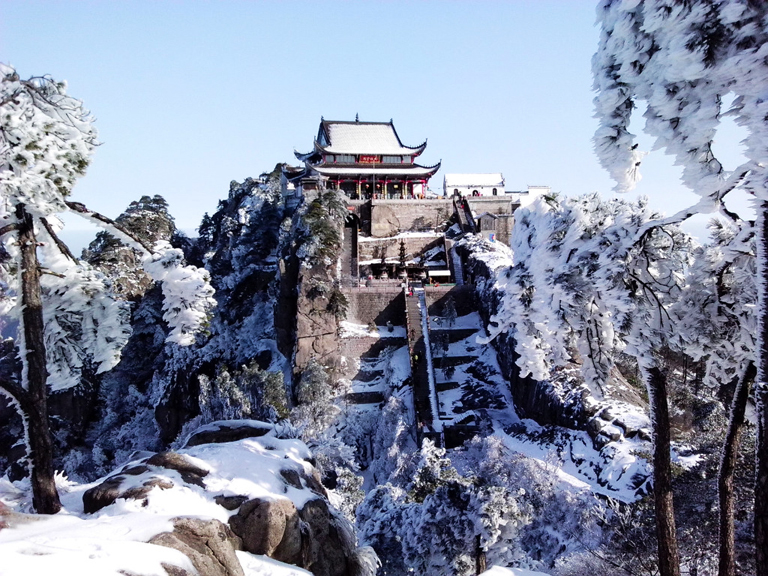
Mount Jiuhua Buddhist Temples.
Local Cuisine and Accommodation Nearby
Exploring the serene beauty of Mount Jiuhua is not just a feast for the eyes; it can also be a delightful culinary adventure. After a day of immersing yourself in the rich Buddhist culture and breathtaking landscapes, treat yourself to some local flavors and comfortable accommodations to recharge for the next day’s explorations.
Local Cuisine
In the vicinity of Mount Jiuhua, you’ll find a variety of dining options that showcase the flavors of Anhui cuisine, known for its fresh ingredients and unique cooking techniques. Here are some must-try dishes and popular dining spots:
-
Jiuhua Mountain Vegetarian Cuisine
Given the area’s deep Buddhist roots, many restaurants offer vegetarian dishes that are both flavorful and healthy. Look for local restaurants serving Buddhist vegetarian meals featuring ingredients like mushrooms, tofu, and seasonal vegetables, often prepared in creative and appealing ways. -
Huangshan Braised Fish (黄山煮鱼)
A local specialty, this dish consists of fresh fish braised with a medley of herbs and spices, creating a savory experience that pairs beautifully with rice. Many restaurants near Jiuhua Mountain serve this delicious dish, and it’s a great way to taste the local flavors. -
Steamed Bamboo Shoots
During the spring months, try the fresh steamed bamboo shoots, which are tender and naturally sweet. This dish is often served with a sprinkle of soy sauce or sesame oil, enhancing its delicate flavor. -
Local Noodle Shops
For a quick and satisfying meal, stop by a local noodle shop. Try the Jiuhua noodles served in a rich broth, topped with fresh herbs and vegetables. These hearty bowls are perfect after a long day of hiking.
Accommodation Nearby
After indulging in the local cuisine, unwind at one of the comfortable accommodations near Mount Jiuhua. Here are some recommendations that cater to various budgets:
-
Jiuhua Mountain International Hotel
This upscale hotel offers stunning views of the mountain and is conveniently located near the entrance to the scenic area. With modern amenities, spacious rooms, and an on-site restaurant serving both local and international cuisine, it’s a perfect choice for travelers seeking comfort and convenience. -
Buddhist Temple Guesthouses
For a unique experience, consider staying at one of the guesthouses run by local temples. These simple yet cozy accommodations often offer a peaceful environment and a chance to engage with the local Buddhist culture. Guests can enjoy communal meals and meditation practices. -
Budget Hostels
If you’re traveling on a budget, there are several hostels in the nearby town of Chizhou that provide a friendly atmosphere and affordable rates. These hostels are ideal for backpackers and those looking to meet fellow travelers. -
Homestays
Experience local hospitality by opting for a homestay in a nearby village. This option allows you to immerse yourself in the local culture, enjoy home-cooked meals, and gain insights into the traditional lifestyle of the area.
Whether you’re savoring the flavors of Anhui cuisine or finding solace in a tranquil accommodation, your journey to Mount Jiuhua will be enriched by the beautiful experiences both on and off the mountain.
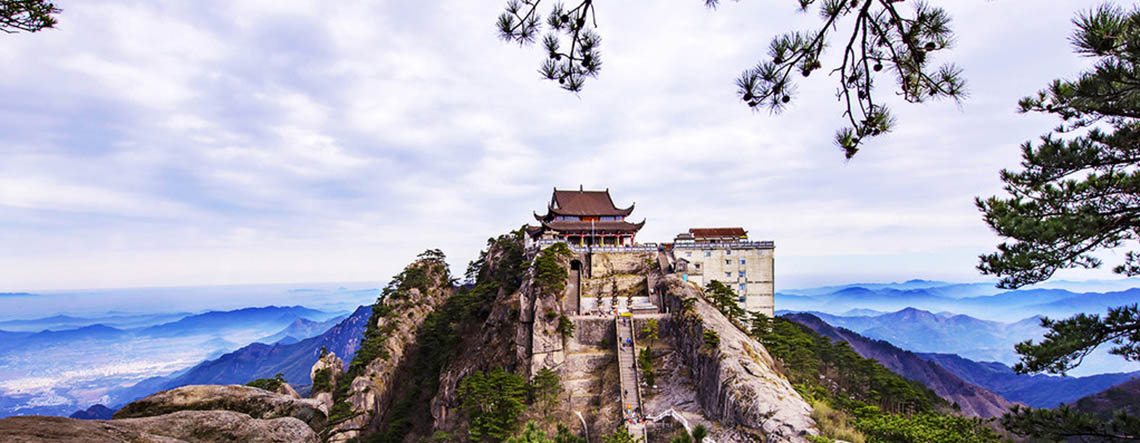
Mount Jiuhua Buddhist Temples.
Frequently Asked Questions
Frequently Asked Questions about Mount Jiuhua Buddhist Temples
1. What is the best time to visit Mount Jiuhua?
The ideal time to visit Mount Jiuhua is from March to November. During these months, the weather is generally pleasant, and you can fully enjoy the natural beauty and cultural experiences the mountain has to offer.
2. How long should I plan to spend at Mount Jiuhua?
A visit typically requires one to two days to explore the various temples, scenic areas, and hiking trails. This allows ample time to appreciate the breathtaking landscapes and immerse yourself in the rich Buddhist culture.
3. Are there any entry fees to visit Mount Jiuhua?
Yes, there is an entry fee. The ticket price is 190 Yuan per person from January 16 to November 14 and 110 Yuan per person from November 15 to January 15 of the following year. Please note that the fees for cable cars and sightseeing buses are not included in this price.
4. How do I get to Mount Jiuhua from Chizhou?
Mount Jiuhua is located approximately 20 kilometers from downtown Chizhou. You can take a taxi, a local bus, or arrange a private transfer to reach the site. Public transport options are frequent and affordable.
5. What should I wear when visiting Mount Jiuhua?
Comfortable walking shoes are essential since you will likely be hiking. Additionally, dress in layers to accommodate varying temperatures, especially if you plan to spend a full day outdoors. Bring a hat and sunscreen to protect against the sun.
6. Are there accommodations available near Mount Jiuhua?
Yes, there are various accommodations ranging from budget hostels to more upscale hotels near Mount Jiuhua. Booking in advance is recommended, especially during peak tourist seasons.
7. Is it suitable for children and elderly visitors?
Yes, Mount Jiuhua is generally accessible for families, but some trails may be steep or challenging. There are also accessible paths and areas suitable for children and elderly visitors. It’s advisable to plan your itinerary according to the physical capabilities of your group.
8. Can I find English-speaking guides at Mount Jiuhua?
Yes, many local guides can provide tours in English. Hiring a guide can enhance your experience by offering insights into the history and significance of the temples and natural surroundings, making your visit more enriching.
Final Thoughts on Your Trip
As you conclude your journey through the sacred landscapes of Mount Jiuhua, take a moment to reflect on the rich tapestry of history, spirituality, and breathtaking natural beauty that this magnificent Buddhist mountain offers. Whether you’ve wandered through ancient temples, marveled at the stunning 99 peaks, or found solace in the serene atmosphere, Jiuhua Shan leaves an indelible mark on the soul.
This hallowed ground, dedicated to Ksitigarbha Bodhisattva, is more than just a pilgrimage site; it’s a place where the whispers of poets and monks echo through time, reminding us of the profound connections between nature and spirituality. As you depart, carry with you not just memories of the picturesque vistas and cultural heritage, but also a renewed sense of peace and understanding of the Buddhist teachings that are deeply rooted in this extraordinary locale.
In every corner of Jiuhua, you’ll find a sense of tranquility that invites contemplation. Whether you’re a devout practitioner or a curious traveler, the essence of Mount Jiuhua will resonate long after you’ve left its sacred paths. Embrace the stories woven into its landscape, and let them inspire your journey ahead.